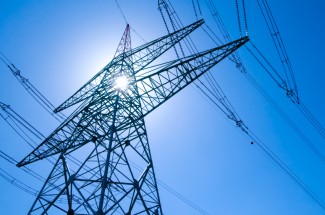Given the importance of small businesses to our national economy, ACEEE has examined successful utility program practices in the small commercial segment. We find there are still significant energy efficiency opportunities. Our new paper describes effective program strategies.
Our findings are crucial, because as we’ve written before, small businesses are critical to the health of local economies, generating more than half of net new private sector jobs. They also occupy more than 20 billion square feet that require energy for heating, cooling, lighting, and other purposes; their square footage represents more than 30% of all commercial space. Accordingly, small businesses comprise a large market for electric and natural gas utilities.
Small business may be a hard-to-reach but not impossible-to-reach market
Despite their importance, small businesses have often been underserved by utility energy efficiency programs. According to EnergySavvy, small-to-medium commercial and industrial utility customers are the “forgotten middle.” They represent 90% of US businesses and consume about 20% of US energy, but they attract less than 4% of utility energy efficiency spending.
Utility program managers have long considered small commercial customers difficult to reach because of participation barriers faced by small business owners, such as lack of staff, time, money, and awareness of program offerings as well as energy efficiency benefits in general.
Addressing these barriers is not always enough to persuade small business customers to participate in programs. Structural and economic limitations hinder program managers from providing programs that garner broad participation and simultaneously capture deep savings. The small business sector is diverse in terms of industry, energy uses, savings opportunities, financial needs, languages spoken, building types, and cultures. These differences have important implications for program design.
One-size-fits-all approaches remain important, but only go so far
Most small business energy efficiency programs have tried to overcome these barriers using two primary strategies. First, they provide efficient lighting measures that have wide applicability and relatively quick paybacks. Linear fluorescent and LED lamps, fixtures, and controls deliver highly cost-effective savings to almost every type of small, non-residential utility customer. Second, utilities make participation easier for customers by providing direct installation of qualified measures and high rebates or even free installation. The simple, convenient offerings save the business owner money right away.
On the other hand, many small business programs only offer lighting measures, and even among several of the most well-established programs, 90% of electric savings come from lighting. This leads to lost energy efficiency opportunities. Yet it is possible to address the diversity of small businesses with enhanced program design and to capture savings from a wider variety of energy end-uses. In small grocery stores, for example, refrigeration represents 44–57% of total electricity consumption. Even more significant, most small business programs are electric-only; they don’t provide any natural gas savings measures for space heating, water heating, or cooking.
ACEEE sought to find out what leading programs have been doing to enhance performance. We found emerging trends that may bear fruit in the future as well as program designs and features that are already delivering results.
If I’m a program administrator, how can I reach more customers?
Many of the successful practices embody a shift toward a more customized and customer-centric model. Here’s what we recommend:
- Segment the market and provide customized offerings for each sub-segment
- Tailor and target marketing and communications to provide personalized and relevant messages
- Offer zero-interest or low-interest financing to encourage comprehensive retrofits and deeper savings
- Offer a wide set of eligible measures, for multiple end-uses, based on target market research and data analytics
- Provide dedicated project managers to give customers direct technical assistance, education, and support on energy efficiency
- Establish partnerships with an area’s Chamber of Commerce, small business advocacy organizations, and community groups that can provide access to more commercial customers and engage them as trusted local partners
For more information, check out our report, and join us for an upcoming webinar on energy efficiency for hard-to-reach customer groups, including small businesses. Register for Serving All Customers with Utility Energy Efficiency Programs at efficiencycities.org.

